Large Language Models (LLMs) trained on vast quantities of data can make security operations teams smarter. LLMs provide in-line suggestions and guidance on response, audits, posture management, and more. Most security teams are experimenting with or using LLMs to reduce manual toil in workflows. This can…
Jonathan Corbin, Founder & CEO of Maven AGI – Interview Series
Jonathan Corbin, is the Founder & CEO of Maven AGI. Previously, as the Global Vice President of Customer Success & Strategy at HubSpot, Jonathan led a team of approximately 1,000 customer success, partner success, and contract managers across multiple regions and verticals. His responsibilities included driving…
Qwen2 – Alibaba’s Latest Multilingual Language Model Challenges SOTA like Llama 3
After months of anticipation, Alibaba’s Qwen team has finally unveiled Qwen2 – the next evolution of their powerful language model series. Qwen2 represents a significant leap forward, boasting cutting-edge advancements that could potentially position it as the best alternative to Meta’s celebrated Llama 3 model. In…
Metaphor: ReFantazio Preview – A New World Of Fantasy – Game Informer
Whenever a legendary trio of game creators known for a single franchise embark on a new IP together, it rightfully captures a lot of attention. That’s exactly what director Katsura Hashino, art director Shigenori Soejima, and composer Shoji Meguro, the trio best known for the beloved Persona series, is doing with Metaphor: ReFantazio. Though it derives inspiration from many of Persona’s most prominent elements, Metaphor is a wholly new experience disconnected from the Persona franchise.
Taking place in the fantasy kingdom of Euchronia, Metaphor tells the tale of a world riddled with prejudice. The main protagonist is of the Elda tribe, and during the earliest stages of my demo, his fairy companion, Gallica, expresses shock at how out in the open the prejudice against him was. The two then talk of a fabled world where true equality exists and fantasize about such a society. One of the things people love about Persona is its willingness to tackle challenging topics other games might veer away from, and Metaphor seems to carry that same quality into its narrative.

“What we’ve tried to do in the past with Persona and in this game… both of them are a little bit different from each other,” Hashino says. “In the past for games like Persona, it’s not like our goal was to challenge difficult social problems. What we were really trying to achieve was, ‘We have a story about a young, kind of naïve person growing up and entering into the world of adulthood, and that’s not an easy thing to do. There are a lot of challenges you will face. There’s a lot of ways that you need to grow in order to do that. So by facing difficult problems in those characters’ lives, they can grow into being who they are and figure out who they want to be. That was our goal with Persona. So, it’s not like not like we have this problem we want to cover; we have this character we want to develop, and since it’s set in Japan, it was a method for us to explore these characters’ personalities, by having them grow up in a Japanese society and facing problems in that way.”
“However, Metaphor is not really so much about that sense of growth. It’s more about how we can explore the concept of human imagination and human feelings and thoughts, and how we can learn from these experiences to grow and be better people,” Hashino continues. “That’s what we are more looking at in this game. For Metaphor, what we’re trying to think of was going as broad as we possibly could. We are trying to achieve something where we’re talking about things that affect people of all times, all ages, everywhere in the world. That’s why we focus on this concept of fear and anxiety, because I don’t think there’s anybody at any time who hasn’t lived with some fear or anxiety.”

Combat feels like the next evolution of the turn-based system seen in the Persona games. Most encounters begin with a strike on the enemies in the field before entering the game’s primary turn-based combat mechanics. If you stealthily strike the enemies, you can land multiple hits on them, knocking their health down considerably; you can even kill weaker monsters without entering the turn-based battle.
Metaphor also incorporates a line-based formation system where you can choose which of your party is in the frontline and who hangs back. Those in the back take less damage, but their melee attacks are weaker, while those in the front often receive the brunt of the attack but can also land their own attacks at full strength. During my time with this system, I found the best results came from putting magic wielders and healers in the back, and the more physical warriors up front.

In battle, characters can also summon Persona-like creatures called Archetypes. These powerful entities leverage magic based on traditional fantasy tropes like Knight, Warrior, and Seeker. While they’re strong on their own, Archetypes can also perform team-up attacks called Synthesis. These moves allow one character to lend their strength to another to perform more powerful and affecting attacks. During a boss battle I played, I used Synthesis attacks to great effect, with some applying different elemental effects and others spreading out the damage to all enemies instead of just one.
Speaking of elements carried over from Persona, Metaphor uses similar UI as Persona 5 Royal, giving it an unmistakable style. Flashy menus and gorgeous art accentuate the trademark Soejima style, while the music by Meguro replaces his hip-hop and jazzy rock-inspired soundtrack from the Persona franchise with tracks that feel more inspired by war chants.

“When I first approached the design for this game, I thought, ‘I personally love fantasy. I will do my best to throw away everything I’ve done to date and just design a fantasy character and challenge myself with a new style,” Soejima says. “What kind of ended up happening was that it felt really fun – I had a lot of fun doing it – but I was coming up with something that was kind of an imitation of styles that I had seen. I was thinking, ‘Well, what can I bring to the fantasy genre? How can I add to it and use what I know, use my own style, and bring my own riff on it? So, that was part of what helped inform my design for it. A lot of time with Persona and the other games, we are making games set in the real world, but it’s not to try to make something that’s cool in a game; with my art, I was trying to make something that’s cool in the real world that people like and enjoy, and then bring it in to the medium of the game. For this one, as well, I didn’t want to just go, ‘Okay, what do people like about the fantasy genre? Let’s just make more of that.’ Instead, I tried to bring out more of what people think are cool from other areas and then put that into the game.”
Though I’ve always appreciated Persona’s real-world setting, Metaphor’s fantasy kingdom, narrative threads, and appropriately grotesque beasts pulled me in and made me excited to experience the next evolution of this team’s work. I’m excited to get my hands on the final version when it launches this October.
The Biggest Announcements Of Summer Game Fest And Neighboring Shows
E3 is no more, but in its place a new different kind of summer video game show has emerged. It’s Summer Game Fest… and friends? Geoff Keighley’s show has become an anchor of sorts for the whole thing, but there is plenty more happening just generally nearby. Whatever we want to call it, it has created a lot of content for our website (and the coming issues of the magazine) and below you will find a nearly comprehensive list of everything we wrote this weekend. Enjoy!
ROUND-UPS
Every Game Showcased At Day Of The Devs SGF Edition 2024
From mutant giraffes to house-based romance to hand-drawn voyeurism, the future of the indie games space looks promising.
Everything Announced During The 2024 Summer Devolver Direct Presentation
From Heart Machine’s new game to a new roguelite from the designer behind Dead Cells, here’s everything we learned from Devolver’s latest showcase.
Thirteen Of Our Favorite GAmes From The Wholesome Direct 2024
If cozy games are your thing, these are 13 games you should keep an eye on.
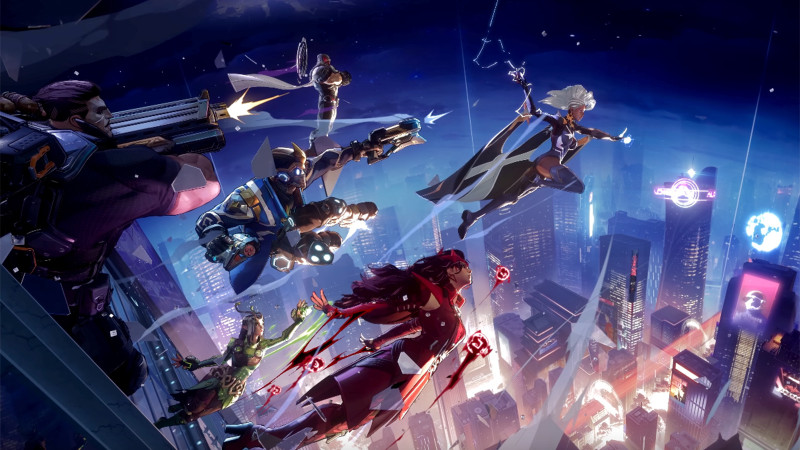
PREVIEWS
Assassin’s Creed Shadows Preview – Katanas And Kunai
While in Los Angeles for Summer Game Fest, we got to see a behind-closed-doors demo for the next Assassin’s Creed.
Marvel Rivals Hands-On Preview – Putting The Hero In Hero Shooter
Marvel Rivals brings to the table much of what initially drew me to Overwatch.
Metal Slug Tactics Preview – A Promising And Challenging Boot Camp
We played a full region of the upcoming spin-off and see a lot of potential in this neat reimagining.
Plotting Explosive Moves In Metal Slug Tactics | New Gameplay Today
Watch us enlist in this promising reimagining of the long-running series.
Wolfhound Is Inspired By Metroid And NES Metal Gear | New Gameplay Today
Join us for a look at some gameplay from the upcoming Metroidvania platformer.
Donkey Kong Country Fans Should Take Note Of Nikoderiko: The Magical World | New Gameplay Today
Crash Bandicoot fans should pay attention, as well.

UBISOFT FORWARD
Assassin’s Creed Shadows Highlights Character Differences
A new gameplay trailer shows off the distinct playstyles of the leads in the Japan-set release.
Star Wars Outlaws Gets Lengthy Gameplay Demonstration
Get a look at many of the game’s systems and locations in this guided tour.
Prince Of Persia: The Sands Of Time Remake Is Coming In 2026
Sands Of Time exists again… but we won’t playing it for a long time.
Prince Of Persia: The Lost Crown ‘Divine Trials’ DLC Available Now, Story DLC Out This September
The new Divine Trials DLC includes revisited bosses, new puzzle and platforming challenges, new amulets, and more.
Assassin’s Creed Shadows Gameplay Reveal Shows Off The Disparate Talents Of Yasuke And Naoe
See how each of these very different assassin’s play in this extended gameplay showcase.

XBOX SHOWCASE
Call Of Duty: Black Ops 6 Gameplay Reveal Highlights Post-Cold War Action And Conspiracy In The 1990s
It’s our first look at the story for Call of Duty: Black Ops 6.
Doom: The Dark Ages Revealed, And It Hits PlayStation, Xbox, And PC Next Year
Doom goes medieval for the threequel in ID Software’s modern reboot of the series.
State of Decay 3 Trailer Revealed, Coming To Game Pass Day One
Undead Labs showed off the third installment of the franchise at today’s Xbox event.
Starfield Shattered Space DLC Coming This Year, Additional Content Coming Today
Starfield is getting a big expansion later this year, but there’s new content to play right now, too.
Dragon Age: The Veilguard Trailer Introduces The Cast And Reveals A Fall Release Window
See who you’ll be fighting alongside in the game’s first trailer.
Latest Metal Gear Solid Delta: Snake Eater Trailer Shows All Gameplay
We finally have a proper look at Metal Gears Solid Delta: Snake Eater’s gameplay, and it looks great.
Playground Games’ Fable Gets 2025 Release Window In First Gameplay Trailer
Though the trailer is mostly cineamtic, there are a few glimpses of gameplay within it.
Flintlock: The Siege Of Dawn Sets July Launch
A44 Games is a little over a month away from release, according to a new trailer.
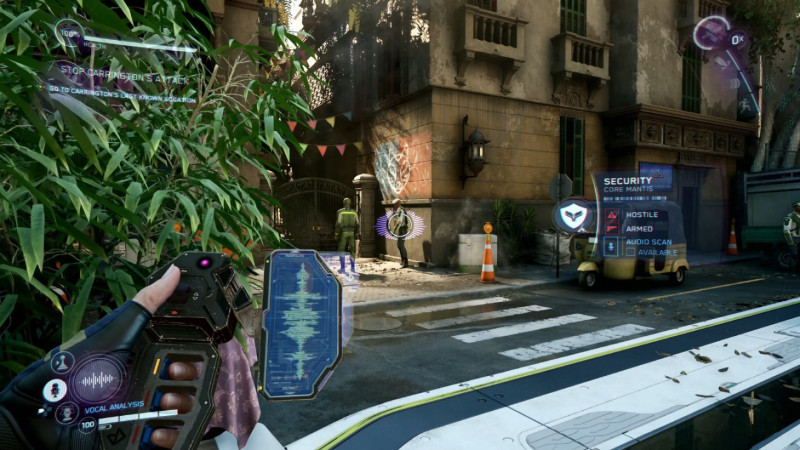
Perfect Dark Gets First Impressive Gameplay Trailer
The long-lost reboot shows signs of life.
Life is Strange: Double Exposure Is A Proper Follow-up To The First Game
It’s a murder mystery that plays out across two parallel timelines.
Diablo IV’s Vessel Of Hatred Expansion Gets October Release Date In New Trailer
The battle of Hatred has only just begun.
New Indiana Jones And The Great Circle Footage Shows Extended Cutscene And Teases Classic Boulder Run
The latest footage of MachineGames’ Indiana Jones game showed an extended cutscene, some gameplay clips, and a tease of the first film’s boulder run.
Get Another Look At Avowed’s Fantasy RPG Action In New Trailer
Avowed hits Xbox Series X/S and PC this year.
Stalker 2: Heart Of Chornobyl’s Latest Trailer Shows Plenty Of Gameplay
Stalker 2’s Xbox Showcase trailer was fully focused on gameplay.
Wuchang: Fallen Feathers Is A Fantastical Souls-like Action RPG Set During China’s Ming Dynasty
Battle demons as a pirate warrior with demonic powers.
Gears Of War: E-Day Is A Prequel Set 14 Years Before The First Game Starring Marcus Fenix
Gears of War goes back to the start of its war.

Three New Xbox Series X/S Models Are Coming This Holiday
If you’re looking to buy your first Xbox, Microsoft has expanded your range of options.
Call Of Duty: Black Ops 6 Release Date Set For October
The latest entry in Treyarch’s long-running subseries arrives on consoles and PC this fall.
Fallout 76’s Skyline Valley Launches Next Week, Play As A Ghoul Starting In 2025
Head southward to the Shenandoah region.
Southern Gothic Action Game South Of Midnight Gets First Gameplay Trailer And 2025 Launch Window
The Bayou-flavored romp comes from the makers of We Happy Few.
Live Like A Mouse With Reveal of Winter Burrow
Pine Creek Games is crafting a new survival game all about making it through winter as a rodent.
Mixtape Is A Sharp-Looking Coming Of Age Story With Music From Devo, Smashing Pumpkins, And More
The next game from the creators of The Artful Escape is all about getting into innocuous trouble as a teenager.
Clair Obscur: Expedition 33 Is A Slick-Looking Fantasy RPG Coming Next Year
Can you break a yearly cycle of death?
Microsoft Flight Simulator 2024 Will Let You Live Out Your Aviation Career Dreams This November
Become an ambulance pilot, aerial advertiser, VIP charter captain, and more later this year.
FragPunk Is A 5v5 Hero Shooter Built Around Cards And First-Person Action
It’s due out sometime next year.

SUMMER GAME FEST
Battle Suit Aces Is A Card-Based Mecha RPG From The Makers Of Battle Chef Brigade
Play your cards right, and you can build powerful mech suits and personal relationships.
Eriksholm: The Stolen Dream Is A New Stealth Game From Former Mirror’s Edge, Battlefield Developers
It’s due out on PlayStation 5, Xbox Series X/S, and PC sometime next year.
Narrative Action Road Trip Game Dustborn Gets New Trailer And Demo Next Week
Transport a package cross-country disguised as a punk band with a crew of superpowered misfits.
The Star Named EOS Is A Wholesome Photography-Based Puzzle Game Releasing Next Month
It’s coming to PlayStation 5, Xbox Series X/S, Switch, and PC.
The Stanley Parable Creator’s Next Game Is About A Cozy Tea Shop (We Think)
Wanderstop tasks players with running a tea shop – but you can’t trust Davey Wreden.
Possessor(s) Is A Side-Scrolling Action Game From The Devs Behind Hyper Light Drifter And Solar Ash
It’s coming to consoles and PC next year.
Tenjutsu Is A Martial Arts Roguelite From The Designer Of Dead Cells
Developer Deepnight Games is calling it a “rogue-jutsu.”
Cult Of The Lamb’s Unholy Alliance Update Adds Local Campaign Co-Op This August
Player 2 will control a new character known as the Goat.
Amazon MMO New World Coming To Consoles With Major Updates
New World: Aeternum launches in October.
Monster Hunter Wilds Latest Gameplay Trailer Shows Off Thrilling Desert Battle
Watch an action-packed chase in this new gameplay video.
Get A New Look At Phantom Blade Zero In New Gameplay Trailer
There’s still no release date for the game.
Killer Bean Is A Humorous Open-World Action Roguelite Hitting Early Access This Summer
Play as a rough and tough bean assassin in an ever-changing open-world.
Skate: ‘Pre-Pre-Alpha’ Gameplay Revealed In New Trailer, Console Playtesting This Fall
Though there’s no release date in sight, at least players can soon play the game later this year.
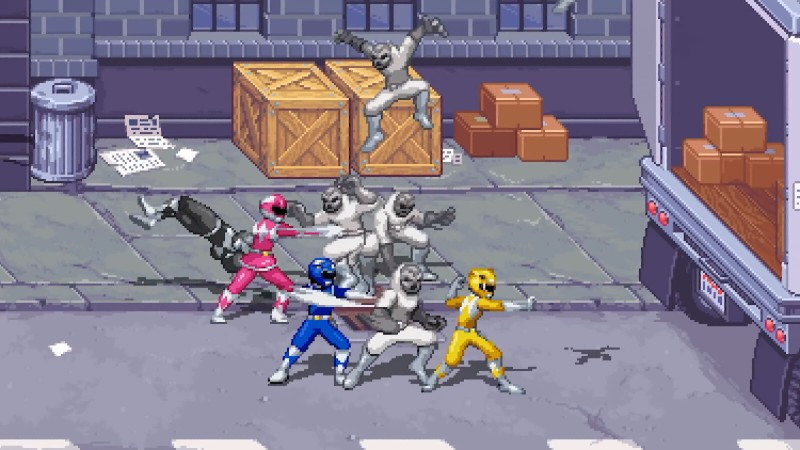
Mighty Morphin Power Rangers: Rita’s Rewind Announced
The new retro-themed game looks focused on side-scrolling brawling, but it also has some other surprises in the mix.
Supernatural Action Strategy Game Kunitsu-Gami: Path Of The Goddess Launches In July
A new trailer shows off its colorful and bloody blend of action and strategy.
Valorant For PlayStation And Xbox Coming Later This Year
The popular hero shooter from League of Legends developer Riot Games makes the jump to PlayStation and Xbox later this year.
Alan Wake 2 Night Springs Expansion Releases Tomorrow, Physical Version Of The Game Coming Soon
The DLC will put you in the shoes of three familiar characters.
Battle Aces Is A Far-Future ‘Action Real-Time Strategy’ Game That Aims To Make The Genre More Approachable
Check out the reveal trailer for a look at its sci-fi action.
Sonic X Shadow Generations Gets October Release Date In New Gameplay Trailer
It’s been over 13 years since the original game’s release.
The First Descendant Is Coming In July
The highly anticipated free-to-play shooter is releasing this summer.
Cairn Is A New Climbing Adventure-Survival Game From The Developers Behind Haven
And it might be the first rope-lite.
Kingdom Come: Deliverance II Trailer Details The Story And Shows Its Sense Of Humor
Summer Game Fest offered us our first substantial look at the game and its story.
Silent Hill Creator’s Slitterhead Gets First Gameplay Look In New Trailer, Out This November
Slitterhead is the first game from Keiichiro Toyama’s Bokeh Game Studio.
Street Fighter 6’s Year 2 Fighters Include M. Bison And Fatal Fury Guest Fighters
Four new combatants are ready to hit the streets.

Dragon Ball: Sparking Zero Arrives In October
The next big Dragon Ball fighting game arrives this Fall.
Metaphor: ReFantazio Archetypes Detailed
The creators behind the recent Persona games took to the stage to reveal new details on the exciting new RPG.
New Batman: Arkham Shadow VR Pre-Rendered Trailer Teases The Story
We still haven’t seen gameplay, but the latest Arkham Shadow trailer teases the story and characters you will meet.
Neva Gameplay Trailer Shows Off Its Beautiful World And Graceful Combat
The creators of Gris have new footage of its next project.
Sid Meier’s Civilization 7 Announced, Coming To Consoles And PC Next Year
This reveal follows Geoff Keighley teasing that 2K had plans to reveal “the next iteration” of one of its biggest and most beloved franchises during SGF.
PlayStation Reveals Lego Horizon Adventures, Coming To PS5, Switch, And PC This Holiday
Aloy’s brickified adventure can be played solo or in co-op with a friend.
New Harry Potter Quidditch Video Game Is Coming In September
Harry Potter Quidditch Champions is coming later this year.

NEWS
Possessor(s) Is A Side-Scrolling Action Game From The Devs Behind Hyper Light Drifter And Solar Ash
It’s coming to consoles and PC next year.
Polaris Is A Co-Op PvE Shooter Coming To PC This Year With Fully Destructible Environments
You can sign up for a beta playest right now.
Hotel Galactic Is A Sci-Fi Management Sim With Studio Ghibli-Inspired Visuals Coming To Consoles And PC
Developer-publisher Ancient Forget is launching a Kickstarter for the game next month.
Get Another Look At Into The Dead: Our Darkest Days’ Texan Zombie Action In New Gameplay Teaser
The game is getting a Steam demo this October.
Streets Of Rogue 2 Gets August Early Access Launch Date
The wacky procedurally generated sandbox welcomes players to its chaotic world.
Phantom Line Is A Co-Op Shooter Set In A Post-Nuclear Europe From Former BioShock, Cyberpunk 2077 Devs
Its reveal trailer, which you can watch here, is quite spooky, too.
What was your favorite announcement from the weekend?
Get Your First Look At Dragon Age: The Veilguard’s Real-Time Action Combat In First Gameplay Trailer
Developer BioWare has released the first official gameplay trailer for its upcoming RPG, Dragon Age: The Veilguard. Featuring more than 20 minutes of gameplay, this is the first look at the game’s action combat, the magical city of Minrathous, the player-character Rook, some of the companions who are joining Rook’s journey, how dialogue choices work, and more.
In the gameplay trailer, which begins in Minrathous, we see returning fan favorites Varric Tethras and Lace Harding alongside newcomer companion Neve Gallus, a private detective mage, and Rook. Solas, the once-ally mage turned foe at the end of Dragon Age: Inquisition’s Trespasser DLC, is attempting to destroy the Veil, a barrier between the magical Fade and the continent of Thedas. Our team, seemingly not quite the titular Veilguard just yet, is attempting to stop him.
Check it out for yourself in the official gameplay trailer for Dragon Age: The Veilguard below:
[embedded content]
At just 20 minutes, this gameplay reveal is a tease of what’s to come in the final game when it hits PlayStation 5, Xbox Series X/S, and PC this fall. However, Dragon Age: The Veilguard is Game Informer’s next cover story, and in the latest issue, you can get an exclusive in-depth look at what happens next in the game alongside new details about the extensive character creator, the game’s main hub location, the action combat, and so much more.
Be sure to subscribe here to ensure our Dragon Age: The Veilguard issue reaches your mailbox. And keep an eye on Game Informer’s Dragon Age: The Veilguard coverage hub for upcoming articles about the game with exclusive details, interviews, video features, and more.

For more about the game, check out this recent Dragon Age: The Veilguard trailer that introduces the game’s cast, and then read about how the name changed from Dreadwolf to The Veilguard.
What do you think of this gameplay reveal for Dragon Age: The Veilguard? Let us know in the comments below!
Gears Of War: E-Day Is A Prequel Set 14 Years Before The First Game Starring Marcus Fenix
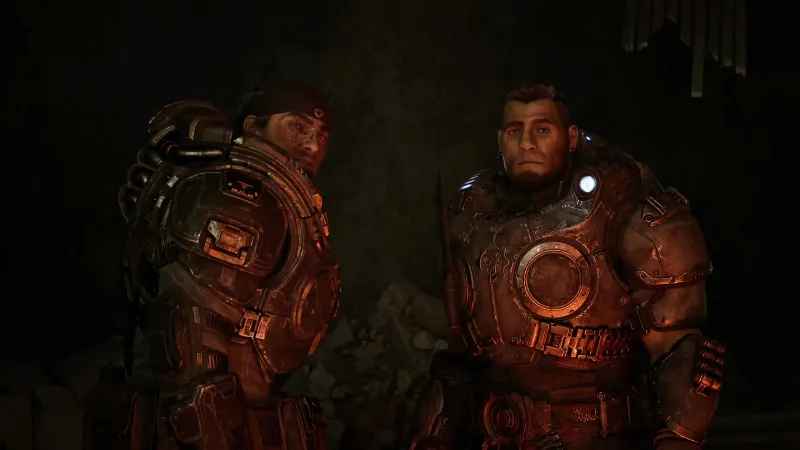
Xbox has revealed Gears of War: E-Day, and it’s a prequel “origin story” set 14 years before the very first Gears of War game. Revealed during today’s Xbox Games Showcase, E-Day stars fan-favorite hero Marcus Fenix and gives players the chance to experience the terror of the infamous Emergence Day.
In the trailer, which features an orchestral remix of Gary Jules’ Mad World (the very same Mad World from the Gears of War launch trailer), we see Marcus and returning hero Dom Santiago come face to face with the Locust Horde. And though we know the Locust Horde quite well, it appears to be Marcus and Dom’s first bout with these infamous enemies.
Check it out for yourself in the Gears of War: E-Day reveal trailer below:
[embedded content]
“Experience the brutal horror of Emergence Day through the eyes of Marcus Fenix in the origin story of one of gaming’s most acclaimed sagas,” the trailer’s description reads. “Fourteen years before Gears of War, war heroes Marcus Fenix and Dom Santiago return home to face a new nightmare: the Locust Horde. These subterranean monsters, grotesque and relentless, erupt from below, laying siege on humanity itself.”
Xbox says E-Day has been developed from the ground up with Unreal Engine 5 and promises to deliver “unprecedented graphical fidelity.”
There’s no release date or window for E-Day yet.
Are you excited about Gears of War: E-Day? Let us know in the comments below!
Fallout 76’s Skyline Valley Launches Next Week, Play As A Ghoul Starting In 2025
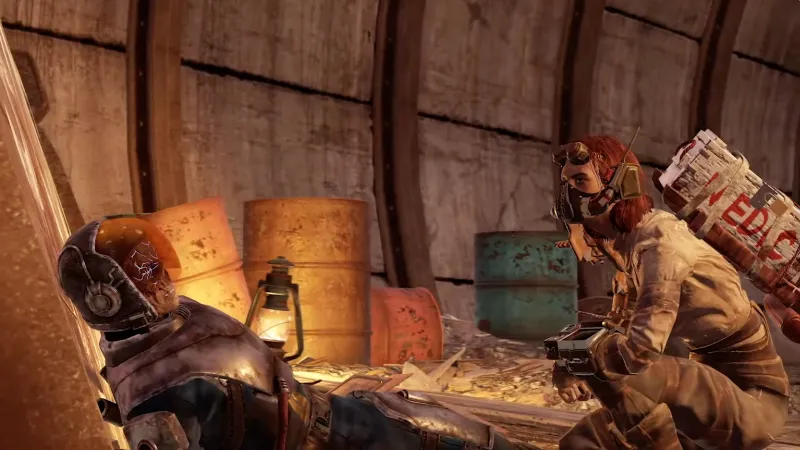
The next expansion for Fallout 76 is called Skyline Valley and it launches next week. More specifically, Skyline Valley expands the game’s map southward to the all-new Shenandoah region on June 12.
There, players will investigate the cause of an electrical storm circling overhead and unveil the mystery around Vault 63. In this mysterious vault, players will meet its dwellers and discover a new Ghoul type called The Lost, too.
Check it out for yourself in the Fallout 76: Skyline Valley trailer below:
[embedded content]
As you can see from the trailer above, the Shenandoah region is not looking so great in post-apocalyptic America. Plus, the trailer also reveals that Fallout 76 players can play as Ghouls starting sometime next year.
Are you going to play Fallout 76’s Skyline Valley expansion next week? Let us know in the comments below!
Mixtape Is A Sharp-Looking Coming Of Age Story With Music From Devo, Smashing Pumpkins, And More
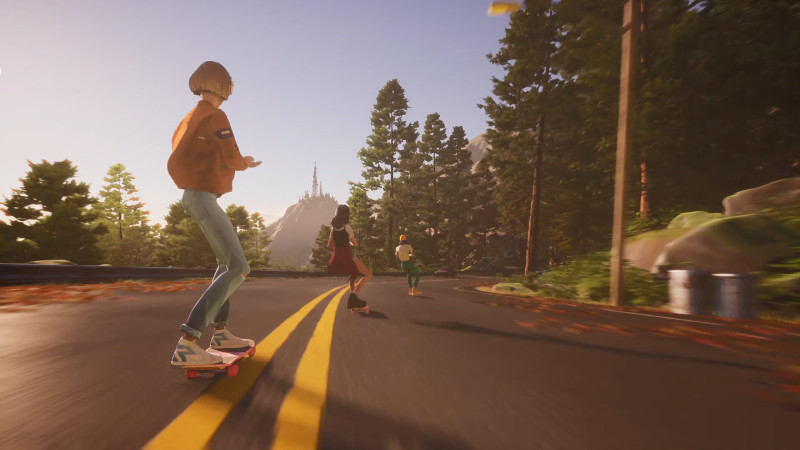
Beethoven & Dinosaur, the developer behind The Artful Escape, revealed its next game during the 2024 Xbox Showcase, and it’s all about being a teenager, getting into trouble, listening to music, and apparently flying through the air (though it is likely a metaphor). The trailer, which features an impressive art style and character animation that drops frames à la Spider-Man: Into the Spider-Verse, will feature music from bands like Devo, Roxy Music, Lush, and The Smashing Pumpkins, among others.
[embedded content]
The game is being published by Annapurna Interactive and is coming some time in 2025.
Clair Obscur: Expedition 33 Is A Slick-Looking Fantasy RPG Coming Next Year

Clair Obscur: Expedition 33 was one of the brand-new reveals during today’s Xbox Game Showcase. Developed by Sandfall Interactive (its debut title), the turn-based RPG unfolds in a fantastical world governed by a powerful figure who wipes out countless innocents every year via a mysterious number.
Clair Obscur’s world is at the mercy of the Paintress, who awakens once a year to paint a cursed number on a monolith. That number causes every person of that age to instantly vanish in wisps of smoke. The citizens dealing with this recurring threat know that her next number is “33” and a brave collection of them have one day to mount an expedition to her island to stop her once and for all. However, these “Expeditioners” are merely the latest of dozens of failed attempts at killing the Paintress. Thus, this team will retrace the steps of every squad that came before them as they explore a dreamlike world filled with dangerous threats.
[embedded content]
The game is powered by Unreal Engine 5 and sports slick-looking turn-based action. Clair Obscur: Expedition 33 is coming in 2025 to PlayStation 5, Xbox Series X/S (including launching day one on Game Pass), and PC.
